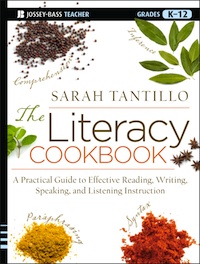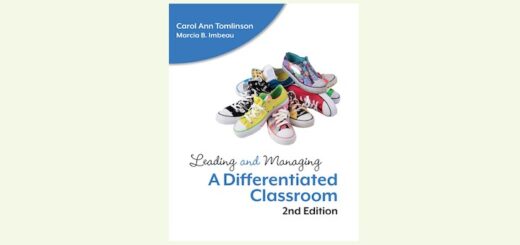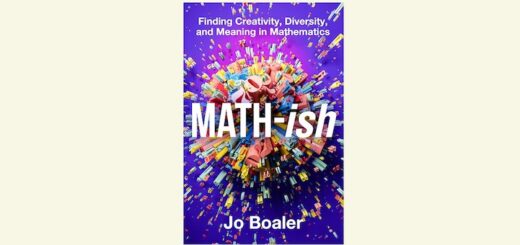Teaching Argument vs. Evidence
Sarah Tantillo is the author of THE LITERACY COOKBOOK: A Practical Guide to Effective Reading, Writing, Speaking, and Listening Instruction (Jossey-Bass, 2013). This MiddleWeb post is drawn from Sarah’s blog, The Literacy Cookbook, where she shares a wealth of ideas about helping students meet the ELA Common Core Standards. (Read a review here at MiddleWeb.)

One of the things students struggle with the most — and it’s relevant to every grade and subject — is distinguishing between argument and evidence. This problem manifests itself in both reading and writing.
In this article, I want to briefly highlight these two key Common Core ELA-Literacy elements and point you to more in-depth discussion and resources at my Literacy Cookbook blog.
The problem
In reading, students often cannot pick topic sentences or thesis arguments out of a lineup; and when writing, they tend to construct paragraphs and essays that lack arguments.
I have no doubt that many, many students have become turned off to writing after spending countless hours drafting an essay, only to be told that they would have to completely rewrite it because it lacked a thesis. (One way to prevent this disillusionment is to check students’ draft introductions before they go any further: it only takes a minute and can save hours of agony.)
Textbooks have contributed to this problem because they often fail to model good writing. Typically, they lack arguments; instead, they offer strings of facts that are occasionally indented. So we need to provide better models. But more broadly, we need to be strategic about teaching students how to distinguish between argument and evidence and how to build effective arguments with evidence.
The six steps
So, let’s consider the specific skills that students must master as a six-step continuum. Click on the “More” link at the end of each step to visit my blog and discover more ideas and information about teaching students these skills.
Step 1 – Ensure that when given a list of statements, students can distinguish the arguments from examples of evidence. It’s important to clarify that in this context, the word “argument” does not mean people yelling or throwing plates but instead refers to a claim, opinion, or debatable statement that requires proof/evidence for support. More.

Step 3 – Given arguments, students must support them with their own relevant evidence and explanation. Although students should now have some sense of what we mean by “relevant” evidence, they may not know what “good explanation” looks like or why it’s even needed. We need to take time to explain why EXPLANATION is necessary. More.
Step 4 – Given questions, students must answer them with arguments and relevant evidence and explanation. In other words, students need to generate their OWN arguments. The questions should begin with either “Why” or “How” in order to set up argumentative as opposed to factual responses. More.
Step 5 – Students must generate questions that warrant research and debate. In other words, students need to learn how to ask their own research- and debate-worthy questions. As always, we’ll want to MODEL what we expect. The Common Core Standards, being focused on TEXTS and the ability to analyze and explain them, are not interested in asking, “How would you feel if…?” More.
Step 6 – Students must research and build arguments supported with evidence and explanation to answer the questions they have generated. This is a dramatic step further down the road and will require a lot more scaffolding. What does it mean to research? And once students FIND resources, they have to know how to pull useful, relevant information out of them. More.
In college, professors expect students to be able to start with #4 during class discussions. Number 5 is used in seminar discussions (and online discussions, etc.), and number 6 is also known as writing a paper. The sooner we in K-12 begin giving students opportunities to practice these college readiness skills, the better, starting with 1,2,3.
Sarah Tantillo is a literacy consultant who taught high school English and Humanities in both suburban and urban public schools for fourteen years, including seven years at the high-performing North Star Academy Charter School of Newark.




































Im a linear teacher, so step by step instructions are excellent for me and my students.